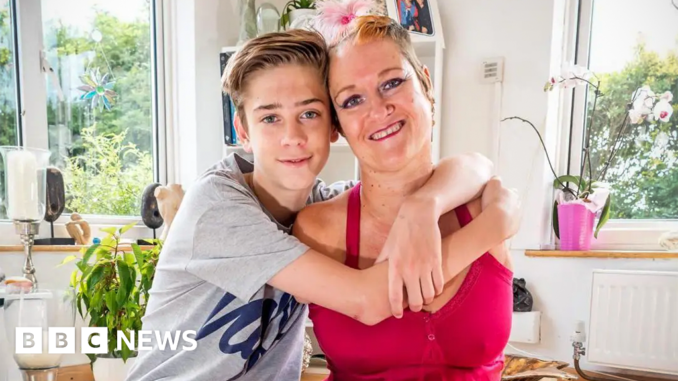
 Alamy
AlamyThe director of a contemporary art gallery once said: “If you’ve got an Alison Lapper up on the wall, you’ve got to justify it every day.”
All her life, artist Alison Lapper has faced constant scrutiny about her artwork and personal life.
Born with a condition called phocomelia, meaning she has no arms and shortened legs, Alison sparked debate when she posed, naked and pregnant, for a sculpture. The artwork sat on the fourth plinth in London’s Trafalgar Square for two years from 2005.
As she reflects on being shown videos and photographs from across her life for a new BBC One documentary, Alison has opened up about the grief of losing her son, Parys, and the love she never received from her own mother, who had been told she had given birth to a “monster”.
Parys died in 2019 of an accidental drug overdose, aged 19.
“The world was against us, and I very much felt that right from the beginning,” says Alison, who was expecting Parys when she posed for the Trafalgar Square sculpture. She remains defiant about the artwork’s legacy.
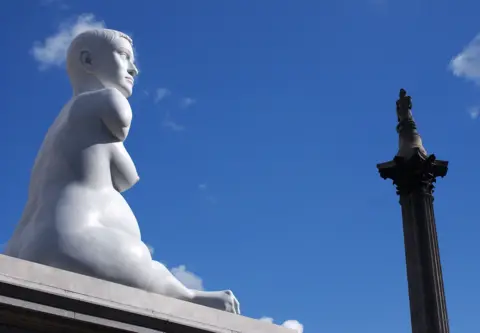 Getty Images
Getty ImagesSome people reacted at the time calling the 11.5ft (3.5m) sculpture by Marc Quinn “vulgar” and “‘disgusting”, she says, and that “she shouldn’t be naked and pregnant and disabled and a single parent”.
“It’s just like, mind your business,” she tells the BBC.
Among the lifeless statues of men who had conquered the past, sat a living figure of a pregnant, disabled woman looking to the future – a future where differences were celebrated.
“Someone said, ‘What would Nelson think?’” says Alison. The naval hero’s statue towers above the square.
“Who cares what Nelson thinks,” she says. “He’s dead.”
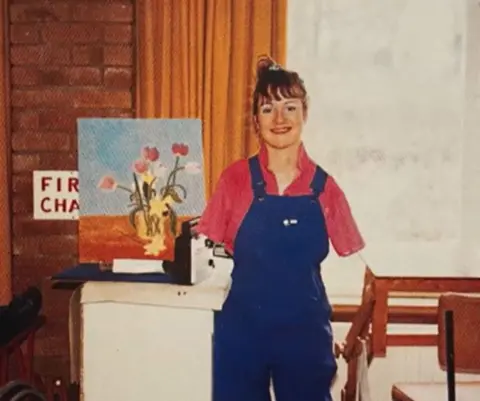 Chalk Productions/Alison Lapper
Chalk Productions/Alison LapperSome of the footage Alison watched for the documentary brought back joyous memories – such as her time studying for a fine art degree at Brighton University in the 1990s.
There, she began to examine the beauty of her body and pose for photographs in the classical style of the Venus de Milo. She recalls being thrilled one day to receive a compliment from one male tutor that she had “nice tits”, as nobody had ever told her that before.
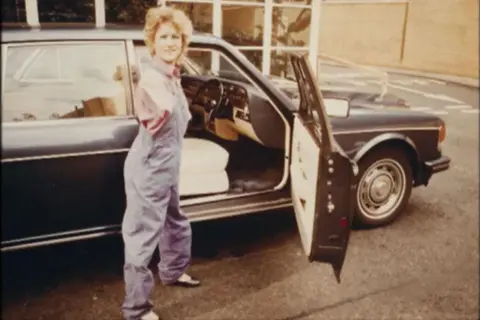 Chalk Productions/Alison Lapper
Chalk Productions/Alison LapperBut as Alison viewed a video of herself breastfeeding her son Parys in hospital after his birth, she admits it is emotional to watch now.
“I just want him back, and I wish I could do that again,” she says, “but all the Doubting Thomases, they kind of won didn’t they, because he died.”
Parys had suffered with anxiety and been bullied at school. His mental health deteriorated over his teenage years until he started using drugs to self-medicate, says Alison.
“It didn’t matter how much I loved him, how much I told him that I was proud of him, all the things that a mother says, hopefully to her child, it didn’t make an ounce of difference – and that’s really painful,” she says.
 Getty Images
Getty ImagesThe reason Alison says she agreed to appear with Parys on the BBC Series, Child of Our Time – which followed 25 children born in 2000 through to adulthood – was to prove she could be a good mother and pave the way for other parents with disabilities to demonstrate that they too had the right to be parents.
But the scrutiny over whether she could care for Parys began when he was born and never stopped. She says she felt like she had to be 150% better than any other parent.
“I got accused of sexually abusing Parys, because I washed him with my feet,” she says. “He was a little baby, I mean how else did they think I was going to keep him clean and wash him and dress him?”
She was reported to social services over an incident in which Parys, then three, had pulled her over. Neither of them was hurt, says Alison.
She was also criticised for giving Parys a doughnut one day as he didn’t want to eat any lunch. She thought it better he ate something rather than nothing before he went to nursery, she says.
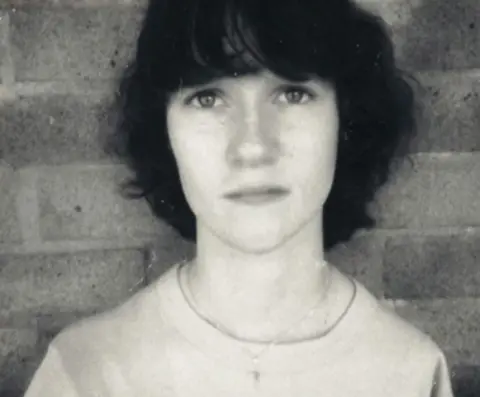 Chalk Productions/Alison Lapper
Chalk Productions/Alison LapperAlison remembers wondering if the scrutiny she faced, bringing up a child as a disabled woman, would ever stop.
“It never did,” she says, “I realise that now – it never will. I will be questioned until the day I drop dead.”
Society can be quick to judge disabled people as “useless” and “helpless”, says Alison, and not realise that she works, drives and owns her own home.
The love and support Alison gave her son Parys was in stark contrast to the relationship she had with her own mother. For much of her childhood, Alison lived at a residential school for children with complex physical disabilities.
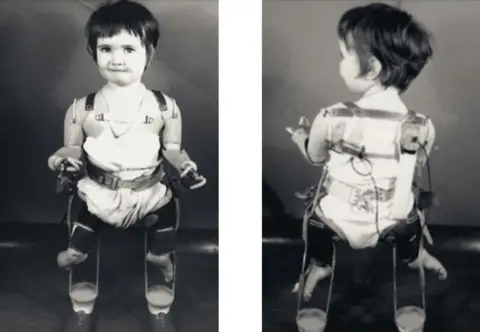 Chalk Productions/Alison Lapper
Chalk Productions/Alison LapperFor the documentary, Alison watched an interview her mother had recorded in 2022, shortly before she died, which Alison had not seen before.
“Her first words were, ‘Well I didn’t love her and I didn’t want her anyway’,” says Alison. “My jaw dropped because, although I already knew that, it’s still a shock.”
Alison’s mother had a breakdown after she was born. “Because she was told that she had given birth to a monster – and that monster was going to die, but of course I didn’t, I’m still here.
“So I get it. But having had my own child, I don’t understand how you can’t love a child.”
Alison has come to realise for some people, whatever their situation, it is not always realistic that a mother will love their child no matter what, she says.
“I always knew I wanted to love Parys like she didn’t love me.”
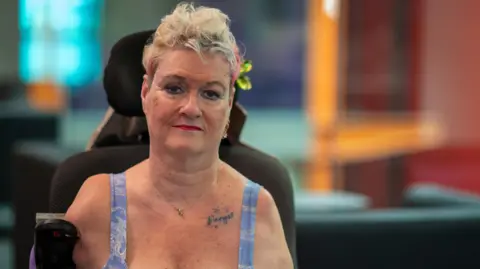
Alison has continued to open herself up to more scrutiny with a new exhibition about Parys’s life.
For the first five years after her son’s death, Alison says she “didn’t want to be here”. But as she began to paint again, Parys started to appear on her canvases, as if urging her to unwrap her grief, she says.
“Putting the exhibition up, especially putting his clothes out [on display], that was like going to see him in the morgue,” says Alison. “It’s like saying goodbye all over again.”
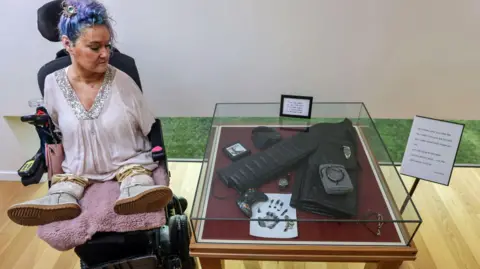 Alamy
AlamyAs a nation, we are so “clammed up” about death, illness and mental health, says Alison, that it is a stigma that Parys died from an accidental drug overdose.
“If it was something else, it would have been tragic,” says Alison, “but it’s almost like I have to carry a little bit of that shame. I refuse to do it.
“Why should society tell me how to feel about what happened? I carry enough grief as a mother, and guilt, already. I don’t need society to give me anymore.”
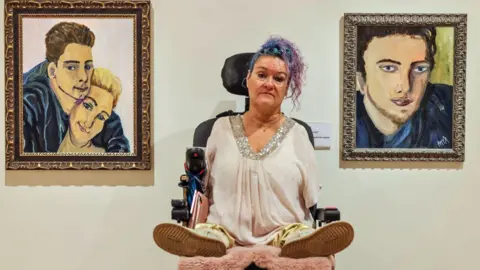 Alamy
AlamyParys’s death was so pointless, says Alison, that she felt all she could do was create Parys again one more time – in the exhibition, on canvas and film – to let him know “what it’s like to be completely and utterly loved by your mum”.
Watch Alison Lapper: In My Own Words, on Monday 9 September at 22:40 on BBC One (23:10 in Wales and 23:30 in Northern Ireland) and BBC iPlayer.
Listen to Alison on the BBC Access All podcast on Wednesday 11 September.
If you are affected by any of the issues raised in this story, support and advice is available via the BBC Action Line.



Be the first to comment